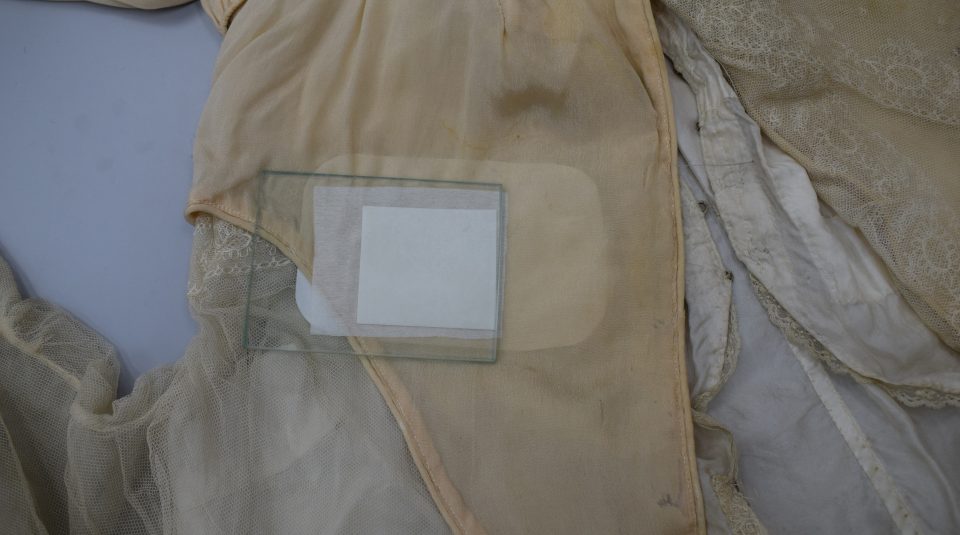


In 2017  we were contacted by the Bury Fusiliers Museum to provide an estimate for conservation and mounting of a wedding dress.
we were contacted by the Bury Fusiliers Museum to provide an estimate for conservation and mounting of a wedding dress.
The dress was worn by Mrs Sutcliff who was a fusiliers bride in 1915. The museum wanted to include the dress in a forthcoming exhibition and sought an estimate to assist in their application for a grant from the Association of Independent Museums. They were successful and the conservation was scheduled for spring 2018.
The dress was typical style for the period, in transition to more fluid looser silhouette. It is made from cream silk crepe with ivory silk lining for the skirt and bodice sections. A professional costumiers/makers label is sewn on the waistband on the inside. The skirt has a naturally situated waist and falls into three gathered tiers of equal depth, each finished with a cotton cord sewn into the hem to give weight and shape to the edge. The top tier gather is disguised by a ‘false’ gathered belt made from the same silk, it is sewn in place at the front and attached by press-studs at the back.
Condition
It was discoloured and very stained and creased with large orange coloured stains particularly on the front across the skirt and bodice. The net sleeves were quite mottled and appeared greyish on the sleeves and the lace trims were brown/yellow. The wire support on the collar had misshapen and broken in two places. There was extensive splitting on upper part of the front bodice and a few smaller tears and holes on the skirt.
The treatment plan for the dress was to wash it to remove the staining and relax the creasing, after testing to make sure it was safe to do so. It was wet cleaned in de-ionised water and a conservation grade detergent and dried within a day, pinning out the areas of lace to make sure they held their shape while drying. This was mostly successful although some stains remained. The split silk areas were supported with adhesive coated silk crepeline applied from behind and re-activated with a solvent. Additional stitching was done in some areas using 2 ply silk thread. The wire collar support was reshaped and repaired at the breaks with bound thread and adhesive.
Finally the dress was mounted for display on a conservation grade mannequin. This was done by padding out a mannequin to fit the dress adding soft arms and underpinnings to fill out the dress in the right places.


